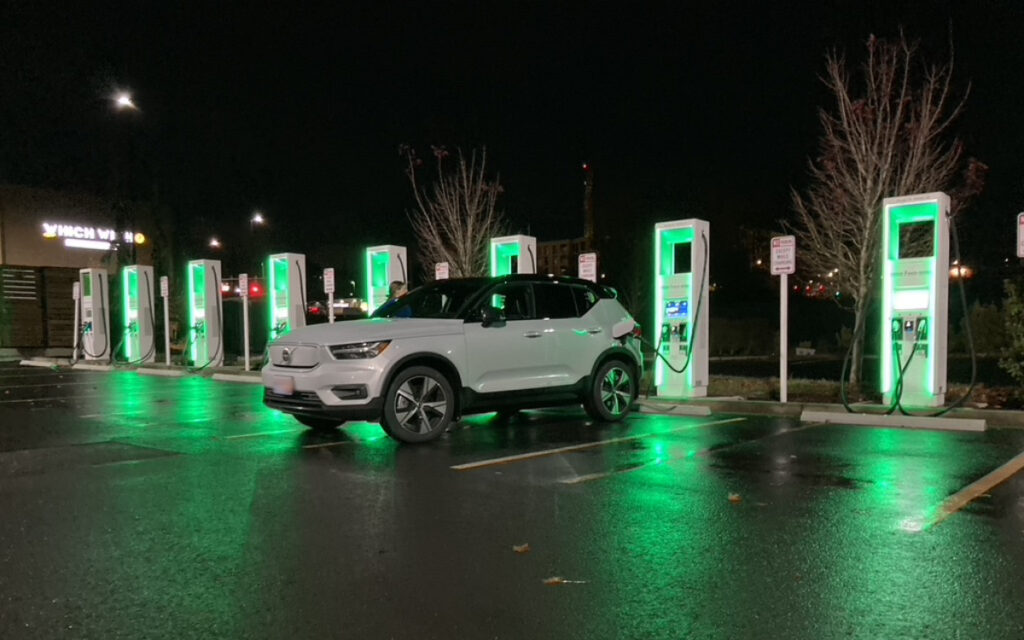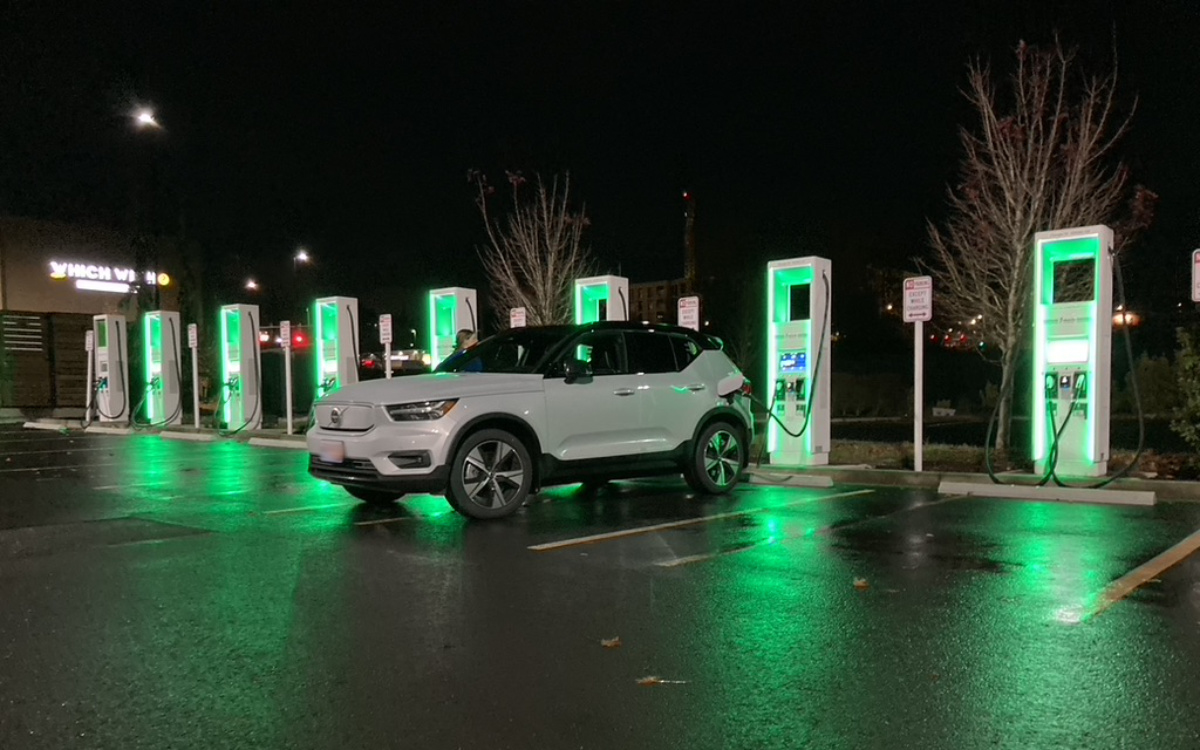Public charging networks need to speed up their rollout of fast charging stations if they want to stay competitive and meet the user demands of today and tomorrow, writes Maxime Charron
Last November, my wife and I planned an EV road trip to Banff, AB. Due to unfortunate weather events — disastrous rainfall in British Columbia that crippled all major highways from Vancouver to the Rocky Mountains — we had to cancel.
We’ve been driving electric since purchasing our first Nissan Leaf five years ago. Those were the days of short-range (150-kilometer) batteries and very few public fast-charging stations (DCFC). I remember hours spent sitting at the only DCFC in North Vancouver waiting to plug in as three other Leafs and a Tesla were in line ahead of me.
Looking for alternate plans, we decided to double down on the trip and drive to Los Angeles in our new small SUV – a Volvo XC40 Recharge.
Happily, in the five years that have elapsed, more DCFCs have been installed by various entities (mostly utilities and municipalities) across provinces providing a much better EV driving experience. Coupled with EVs that have longer ranges and faster charging speeds, the experience of driving electric has been significantly enhanced.
We arrived in Los Angeles learning that having the most range isn’t the major obstacle to the EV driving experience, but rather access to high-power, fast charging infrastructure is.
Charging speed key
The first day of our drive started in very windy conditions. Even so, instead of charging twice to reach Seattle as we have to do with our Leaf in ideal spring conditions, we picked up our first charge just past Seattle at an Electrify America fast charging station with a range to spare.
The XC40 Recharge has a maximum charging rate of 150kW which works out to roughly 30 minutes per charge going from 10 percent to 80 percent — just enough time to grab a bite and get back on the road. On average, most recent electric vehicles on the market are capable of charging speeds between 125kW to 350kW depending on the model.
By contrast, on a 50kW station, our charging time would have gone from 30 minutes to 1.5 hours and would have increased our daily journey of 10 hours by another four hours – a significant amount of time on a 700 to 1,000-kilometre drive each day.
While most charging sites are equipped with one or two 50-62kW charging stations, Electrify America/Canada provides a minimum of 150kW charging speed and multiple stations at all sites. Being able to rely on greater car-to-charge-port ratios removes the stress of having to wait in line if another driver arrives ahead of you while adequate charging infrastructure ensures user experience and supports EV adoption rates by making efficient and effective use of public funding.
For this reason, our strategy on the trip was to use only the Electrify America network as it currently provides the most reliable charging experience.
Infrastructure lagging demand
On a long road trip, overnight charging can be a huge help. We tried to stay at hotels with Level 2 chargers, even though it was more expensive, to save time the next day. When we couldn’t find hotels with EV charging, fast chargers are what we relied on.
But once in Los Angeles, that strategy was tested due to the numerous other new EVs on the road. Very often, all four charging stations at Electrify America sites were in use. Clearly, L.A.’s urban charging infrastructure is not keeping up with demand.
If other charging sites provided the same type of charging infrastructure, we wouldn’t have needed to rely exclusively on Electrify America, but unfortunately, faster sites are still a rarity.
This 5,500-kilometre EV road trip confirmed that range isn’t everything. Rather, it’s the combination of range and adequate (150kW-plus) charging infrastructure that is key to the rapid EV adoption in North America. There are applications where 50kW charging is the best option, such as fleets or locations with limited available power, but if governments keep mass-funding 50kW charging public sites, it will only provide an inadequate charging experience resulting in slower EV adoption.
The U.S. and Canada both have aggressive targets for EV adoption across passenger and light-duty vehicles by 2030. The success of each government investment in charging equipment depends on ensuring taxpayers’ funds are put towards strong, future-proof infrastructure that will serve EV drivers adequately – and not just for a few years, but for decades.
Future-proof infrastructure is critical to meeting these targets and keeping EV drivers on the road.




